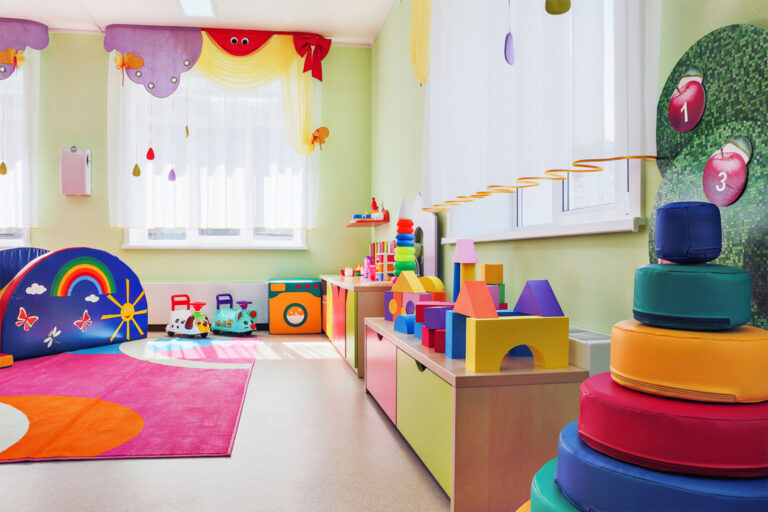The first day of school is an exciting time for both teachers and students. An integral part of ensuring a smooth transition into a new school year is a well-planned classroom setup. Creating a dynamic and organized learning environment plays a critical role in setting the tone for the entire school year. A well-designed classroom can significantly impact student engagement, behavior, and academic success, making it an essential task at the beginning of the school year.
Understanding the Importance of Classroom Setup
Imagine walking into a classroom where everything has a designated place, learning materials are readily accessible, and the atmosphere exudes a sense of excitement and curiosity. Such a learning environment can positively influence students’ attitudes towards learning.
On the other hand, a cluttered and poorly organized classroom can hinder learning by creating distractions, causing frustration, and making it challenging to locate necessary materials. When students feel comfortable and organized, they are more likely to focus on their studies, collaborate effectively, and take ownership of their learning.
Preparing for Your Classroom Setup
Before diving into arranging furniture and decorating bulletin boards, take some time to plan. Having a clear vision of your ideal classroom will streamline the setup process. Start by considering your teaching style, the curriculum you will be implementing, and the specific needs of your students.
Reflect on past experiences and identify areas for improvement in your previous classroom setups. Also, seek inspiration from other educators, browse through educational magazines, and gather ideas that resonate with your vision.
Essential Equipment and Resources for a Functional Classroom
Creating a functional classroom environment involves more than just furnishing it with the necessary equipment. It also requires thoughtful consideration of how to optimize the space for effective teaching and learning experiences.
In addition to the basic essentials like desks, chairs, whiteboards, and storage units, incorporating interactive elements can enhance student engagement. Consider adding educational posters, charts, and visual aids that complement your lessons and cater to different learning styles.
Furthermore, integrating technology into the classroom can modernize the learning experience. Tools such as smart boards, tablets, educational apps, and online resources can make lessons more interactive and dynamic.
Another crucial aspect of a functional classroom is creating a positive and inclusive atmosphere. Encourage collaboration among students by arranging desks in groups or pairs. Implementing flexible seating options like bean bags or standing desks can also accommodate diverse student preferences and promote comfort during learning activities.
Lastly, don’t forget to personalize the space with student work displays, inspirational quotes, and plants to create a welcoming environment that fosters creativity and motivation. By considering these additional elements beyond the essential equipment, you can transform your classroom into a vibrant hub of learning and inspiration for all students.
Tips for Budgeting and Procuring Classroom Supplies
Budgeting and procuring classroom supplies can be challenging, but with careful planning, you can maximize your resources. Start by creating a comprehensive list of all the supplies you need, prioritizing essential items.
- Set a Realistic Budget: Determine how much you can spend. Allocate funds wisely, considering items that can be reused or repurposed from previous years.
- Explore Funding Opportunities: Research grants, crowdfunding platforms, or partnerships with local businesses to supplement your budget.
- Shop Smart: Take advantage of back-to-school sales, discounts for educators, and consider buying in bulk for frequently used items.
By embracing these strategies, you can effectively manage your budget while ensuring your students have the necessary supplies for a successful school year.
The Beginner’s Guide to Classroom Setup
Now that you have a good understanding of the importance of classroom setup, gathered essential supplies, and established a budget, let’s move on to the practical steps for setting up your classroom.
We’ll guide you through a step-by-step process, starting with evaluating your classroom space and culminating in personalizing it to create a welcoming and stimulating environment for your students.
Evaluating Your Space: Starting Points
Before arranging furniture, take the time to carefully evaluate your classroom layout. Consider the size and shape of your classroom, the location of windows and doors, and the availability of electrical outlets and technology connections.
Identify any potential obstacles or limitations. For instance, consider high-traffic areas to avoid congestion and ensure smooth transitions between activities. Also, think about the placement of your teacher’s desk to maximize visibility and accessibility to students.
Remember that an effective classroom layout promotes a positive learning environment and facilitates student interaction and movement. Take advantage of the opportunity to create a classroom layout that supports your teaching style and optimizes student engagement.
Step 1: Designing Your Ideal Classroom Layout
With a clear understanding of your classroom space, you can begin designing your ideal classroom layout. Consider the different learning zones you want to incorporate, such as a whole-group instruction area, a reading corner, a collaborative workspace, and a technology center.
Think about how student desks will be arranged to facilitate different activities. Will you opt for rows, clusters, or a U-shaped configuration? Consider the advantages and disadvantages of each arrangement based on your teaching style and the learning activities you plan to implement.
A flexible seating arrangement can be incorporated into your classroom. Rather than assigning individual desks, this approach allows students to choose seating options that best suit their needs and preferences.
Step 2: Selecting Furniture and Seating Arrangements
When selecting furniture for your classroom, prioritize both functionality and student comfort. Choose desks and chairs that are appropriately sized for your grade level. If space permits, consider incorporating flexible seating options such as beanbag chairs, cushions, or even standing desks.
Flexible seating allows students to choose their preferred seating arrangements, promoting a sense of ownership and autonomy over their learning environment. This approach also encourages movement and can help students stay focused and engaged.
It’s also important to select furniture that aligns with your classroom’s aesthetic appeal. Choose colors and designs that create a welcoming and stimulating environment.
Step 3: Organizing Teaching Materials and Resources
Once you have your furniture in place, it’s time to organize your teaching materials and resources. Begin by decluttering and sorting through items from previous years. Discard outdated or unused materials and donate any surplus supplies.
Invest in sturdy storage solutions, such as clear bins, labeled folders, and bookshelves to keep your materials organized and easily accessible. Label everything clearly, using both words and pictures for younger grade levels. This will not only make it easier for you to find what you need but will also empower students to locate materials independently.
A well-organized classroom promotes a sense of calm and allows for smoother transitions between activities. By keeping your teaching materials and resources in order, you’ll save valuable instructional time.
Step 4: Creating Zones for Different Activities
Creating designated zones for different activities can enhance the functionality and organization of your classroom while catering to diverse learning styles. Clearly define areas for activities such as reading, writing, math, art, and technology. Use furniture, rugs, or visual cues to differentiate these zones and guide student movement.
Step 5: Personalizing the Space for Comfort and Inspiration
Ensure your classroom exudes comfort and inspiration by personalizing the space. Consider incorporating elements like cozy seating areas, motivational quotes, and student work displays to create a welcoming atmosphere. A classroom theme can tie everything together, making the environment engaging and cohesive. Utilize anchor charts and bulletin boards to showcase key information and student achievements, fostering a sense of pride. By infusing your teaching style into the setup, you’ll craft a unique and inspirational learning environment that resonates with your students.
Conclusion
Setting up your classroom like a pro is not just about aesthetics; it’s about creating an environment that fosters learning and growth. By understanding the importance of classroom setup and carefully planning the layout, furniture, and resources, you can enhance student engagement and success. Remember to evaluate your space, personalize it for comfort, and create zones for different activities. Investing time and effort into your classroom setup can make a significant difference in how students interact with the material and each other. Start your journey towards a well-organized and inspiring learning environment today.




